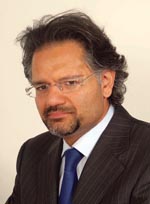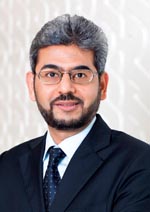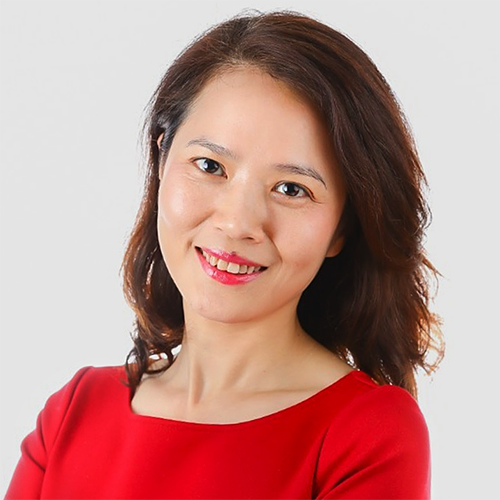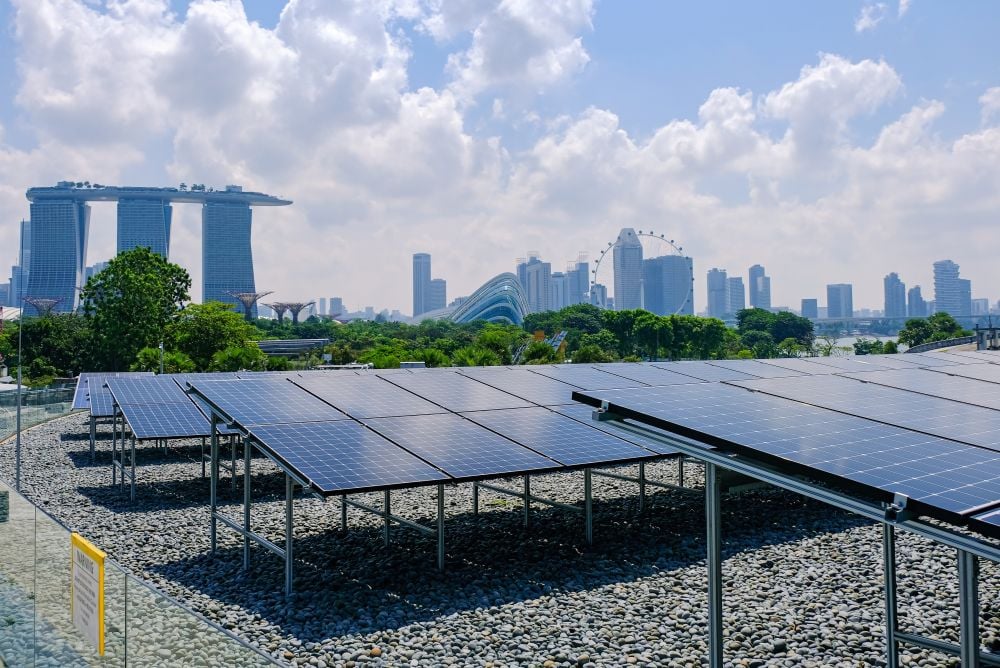2012 is expected to be a record year for sukuk issuances in the GCC (Gulf Cooperation Council) region. Indeed, the first half of 2012 has already seen an explosive growth in sukuk issuances with US$12.8 billion raised from 16 transactions, compared to just US$1.9 billion issued in the same period last year. In all of 2011, US$7.3 billion was issued, up 62% from US$4.5 billion issued in 2010.
 |
|
| Raber: Issuers are attracted to this market due to low volatility |
“The growth of sukuk issuances from the GCC will continue at the current pace,” asserts Henrik Raber, global head of debt capital markets at Standard Chartered Bank, which has been one of the key players in the sukuk arranged in the Gulf region.
“A lot of new issuers are accessing the sukuk market. In the last six to eight months, there has been quite a clear pricing advantage for sukuk versus conventional bonds. It varies from issuer to issuer, but some issuers can price sukuk at about 20bp to 40bp tighter than conventional bonds.”
The strong appetite from investors, who are increasingly demanding Shariah-compliant products, is what is driving the growth of the sukuk market in the region, where Islamic funds as a percentage of total assets under management have been on an upward growth trajectory.
According to a recent report by Markab Advisory, Shariah-compliant funds in the Gulf region amounted to US$22.5 billion in 2011 which represented 61% of the total mutual fund assets under management in the region, an 11 percentage points increase from 50% in 2007.
With continued participation from a range of investors including banks, high net-worth individuals, family offices and wealth management groups, the share of Islamic funds within GCC is expected to account for about 70% of total assets under management in the next three years.
Explosive growth
“There is definitely more interest in sukuk and that makes it trade tighter than conventional bonds, which is driving more issuers to tap this market,” says Raber. “We think the outlook is bright as Islamic liquidity continues to grow. It gives issuers an interesting opportunity in terms of pricing and accessing a unique investor base.”
The latest issuer that took advantage of the increased appetite for sukuk from both the Islamic and non-Islamic pool of liquidity was Qatar. In early July, it priced a US$4 billion dual-tranched sukuk, the largest international sukuk ever. This is Qatar’s first sukuk since 2003, when it issued US$700 million seven-year sukuk. The AA-rated sovereign had little difficultly in persuading investors to buy its paper. The five- and ten-year tranched deal was more than 6× oversubscribed with US$25 billion worth of order coming.
The robust interest Qatar received for its sukuk is not surprising considering the strong global investor following for its bonds. The state was last in the market in December 2011, when it priced its US$5 billion conventional bond in three tranches, attracting more than US$10 billion worth of orders. In 2009, it raised US$7 billion from the conventional market in what was then the world’s largest emerging market bond.
Qatar’s sukuk hit the market on the heels of the successful closing of a number of sukuk and conventional bonds in previous weeks, including Dubai’s Emirates Islamic Bank’s US$500 million sukuk priced on July 4, which received an orderbook of US$5 billion. In April, the government of Dubai sold US$1.25 billion double-tranche sukuk, its first sukuk since 2009, with a US$600 million five-year tranche and a US$650 million ten-year tranche.
“The market has become quite attractive for sovereigns to issue sukuk. They are using structures that are widely accepted without that much innovation, so it is taking investors less and less time to approve these structures,” says a banker based in Dubai.
The Eurozone debt crisis has had a limited impact on the sukuk issuances in the GCC region. In fact, issuers are attracted to this market due to low volatility, says Raber. During the current volatility in the Eurozone crisis, sukuk have generally traded better in the secondary market than conventional bonds, as a larger proportion of sukuk investors tend to be buy- and hold-type investors, who hold the bonds till maturity.
 |
|
| Agha: GCC is behind Malaysia in Islamic finance infrastructure |
As European and Western banks reduce their lending in the GCC region because of the current Eurozone problems, sukuk are issued to fill the funding gap, notes Oliver Agha, managing partner at Dubai-based Islamic law firm Agha and Co. “The GCC countries are estimated to need more than two trillion dollars of capital investment over the next 15 years. As Western conventional lending decreases, the gap is getting wider between demand and the supply of funds available. Sukuk and other Islamic products may be helpful in bridging that gap.”
Raber, however, argues that while there has been reduced lending by European banks in the Gulf region, the reduction is not really contributing to the growth of the sukuk market as the shortfall may have been filled by increased lending from Asian-based banks.
Deepening market
Along with the rise in issuances, the sukuk market in the region has been showing maturity with a variety of issuers including corporates from various geographies tapping this market and with more issuers attempting longer-tenor bonds.
Typically five-year bonds used to be the most favoured, but now seven and ten-year issuances have become increasingly regular, with issuers such as the Government of Dubai and Saudi Electricity Company issuing large deals with a maturity of ten years. Saudi Electricity in March 2012 raised US$1.75 billion from a ten-year sukuk. As mentioned before, the Dubai government in April 2012 priced a dual-tranched bond, including a US$650 million ten-year tranche.
In one of the major trends this year, corporates in the Middle East have been returning to the sukuk market, which in the past few years had been dominated by financial institutions and some sovereign issues. Of the total US$12.8 billion, US$3.38 billion were raised from six corporate sukuk, representing 26.4%
of the total amount.
Commercial property developer Majid All Futtaim Holdings became the first corporate to issue sukuk in 2012 with a US$400 million bond in January 2012. The transaction is the largest GCC corporate sukuk issuance in over a year and the first ever sukuk issuance by a privately-held UAE-based entity in more than four years.
While some of these corporates are linked to the government or have government ownership, bankers note it is a promising development for the market to see issues from a diverse range of issuers.
“Corporates in the region do want to raise Shariah-compliant debt and the timing has been good for them. The interest rate environment has been attractive. The Euro crisis has affected issuers in the Middle East, but only to a lesser extent, because these issuers are increasingly depending on Middle Eastern investors. There is a greater percentage of Middle Eastern investors in these deals, which confirms that investors in the Middle East are strong enough to rely on,” says the Dubai-based banker. In addition to the US dollar market, the Saudi riyal market (which has been active in sukuk issuances) has seen some quite large corporate issuances.
While much focus has been around the US dollar, increasingly GCC issuers are exploring the possibility of issuing sukuk in local currencies to access a different investor base and attractive pricing, with issuers tapping the Saudi riyal and Malaysian ringgit market.
In October 2011, Saudi Aramco Total priced a 3.75 billion Saudi riyal (US$1 billion) sukuk, while in July 2011, Saudi International Petrochemical (Sipchem) raised US$480 million equivalent from a riyal issuance. In February 2012, Abu Dhabi National Energy (TAQA) raised 650 million ringgit (US$214 million) in the ringgit market in the second ringgit sukuk this year from a GCC issuer, and fourth since 2011, according to data provided by Thomson Reuters.
An area where the sukuk market in the Gulf region needs to see some action is issuances from high-yield names. Despite the apparent demand for sukuk, the issuance from high-yield names is still missing in the region, where almost all transactions tend to come from high-rated issuers. This year, all transactions but the US$650 million sukuk from B+ rated Jebel Ali Free Zone (JAFZ) have come from investment-grade issuers. Raber believes the next stage of development in the GCC sukuk market could see increased appetite for lower-rated names. The fact that JAFZ’s sukuk, which was priced in June 2012, has been doing particularly well in the secondary market with sukuk trading up to 105 indicates that there is an increased demand from investors for high-yield sukuk.
In the bank capital market in 2011, Bank Al Jazira issued one billion Saudi riyal sukuk, which is the first-ever public tier 2 capital sukuk. The structure has been seen as the possible template for Islamic financial institutions to address their capital requirement as well as help them manage the regulatory changes arising from Basel III implementation in 2013.
“I think we should expect to see more bank capital transactions. The issuances of bank capital securities will be in line with the development of the banking regulations. As Basel III gets implemented and the rules become clearer around tier 1 or lower tier 2, we will see more issuances. Right now, due to the ambiguity around some of the capital regulations, issuances slow globally, not just for sukuk deals,” argues Raber.
“For the market’s development, it will be good if we start to see broader names and styles of issuers coming to the market. It would be exciting if we see high-yield borrowers interested in doing sukuk transactions,” Raber continues. “There have been some good transactions from corporate names and I think it is a matter of time before this sector takes off. In terms of challenges for the market: some countries lack a clear regulatory and tax framework to issue. That is probably one area where we can expect to see more development to facilitate sukuk issuance.”
Shariah compliance
While Southeast Asia, and in particular Malaysia – currently the largest Islamic finance market in Asia – is seeing some ground-breaking sukuk structures, the issuances coming from GCC are typically pretty straightforward with little deviation from the precedents. “In Southeast Asia, there has been some adjustment to structures in order to incorporate underlying assets to be used. That comes down to interpretation of principles. In GCC, we don’t see meaningful changes on that. Precedents have been set and deals follow such precedents,” says Raber.
In general, Shariah principles interpreted in Malaysia are considered to be more liberal than in GCC. Some of the structures would be acceptable by the Malaysian school of thought, but not by the GCC and the Accounting and Auditing Organization for Islamic Finance Institutions (AAOIFI). AAOIFI is an independent governing body that promotes and maintains Shariah standards for Islamic finance.
For example, when planning to issue sukuk, a company typically has two options: either it already has Islamic assets on its books that it can use to structure the sukuk, obviating the need for a “use of the proceeds” clause. Or, without Islamic assets, it can use the commodity murabaha to raise any amount of Islamic capital, on the implicit condition that the money is used to build up an Islamic asset portfolio and not for conventional activities.
This commodity murabaha structure is not a tradeable structure as per the GCC and AAOIFI’s Shariah norms, which require this structure to be traded at par.
As a result, sukuk from the Middle East typically are not based on pure murabaha structures. In contrast, in Malaysia, murabaha structures can be traded just like any other structure (such as musharaka, ijara or wakala structures) and are regularly used to issue sukuk in the local currency market.
A recent example of a commodity murabaha structure running into trouble in the GCC has been Goldman Sachs’ planned US$2 billion sukuk, announced in October 2011. Controversy arose over the use of the commodity murabaha structure, the lack of restrictions on the use of the proceeds in non Shariah-compliant business activities and the fact that the sukuk would be listed on the Irish Stock Exchange (which may not have been able to guarantee that the murabaha sukuk only be traded at par, as per GCC and AAOIFI norms).
As a result, the sukuk is yet to be issued although Goldman Sachs has insisted that its sukuk has been approved by ten scholars and meets all the necessary criteria.
Lack of central body
The Goldman’s sukuk case highlights the nature of the Shariah-compliance approval process in the GCC. While there is growing uniformity in Shariah interpretation in the region, interpretation of Shariah principles continues to vary across jurisdictions. In an international issuance, the Shariah principles that are most acceptable to investors in the Middle East are used to ensure larger investor participation.
Malaysia and Indonesia follow a centralized model, which helps to speed up market and product development. Shariah structures are usually monitored and approved by a body on a national level, such as Bank Negara Malaysia, the country’s central bank and the Shariah Advisory Council (SAC) of the Securities Commission in Malaysia, and Dewan Syariah Nasional (DSN) in Indonesia. (Though the DSN is not a regulatory body, it still provides a common Shariah view for the local Islamic market.)
In Malaysia, a sukuk structure has to be approved not only by the Shariah committee of the sukuk-arranging bank, but also by the sukuk regulator in the country, which would be Bank Negara (for retail and corporate banking products and insurance) or the SAC (for capital market products).
 |
|
| Ahsan: Different Shariah interpretations spur creativity and innovation |
In contrast, the GCC has no central body and has different Shariah committees sometimes even within the same country, and developing and approving an innovative structure takes time. “While complicated structures have also been developed in the Middle East, innovation has to take a different route in the Gulf region than in Malaysia,” says Ahsan Ali, head of Islamic origination at Standard Chartered.
“Innovation has to be initiated by banks individually and when banks come up with products they have to make sure that the products will be accepted by the maximum number of market participants as there may be differences in interpretation. We try to ensure that we develop products and solutions which are accepted by the vast majority, say 90% of the market participants. We follow generally accepted Shariah principles in structuring the products in line with the AAIOFI guidelines, and with consultation and approval from our own board of scholars widely respected and recognized in the market.”
Ali adds: “The differences are not as wide as they are sometimes made out to be. For example, 90% to 95% of the participants agree to the common principle and 5% to 10% may have a different interpretation. If you have 90% commonality, it is easy to bridge the gap. In fact, the differences in Shariah interpretation have spurred creativity and innovation. You can use different routes to arrive at the same product to ensure that it is acceptable to various scholars of Shariah law.”
The centralized model of Southeast Asia has provided greater clarity in terms of the legal recourse and infrastructure available to stakeholders of Islamic finance. “Malaysia is more advanced and has made more progress in creating the right infrastructure,” says Agha, who notes that the GCC is lagging behind Malaysia in developing the right Islamic finance infrastructure.
“This is still a nascent market and the GCC governments are coming around to the realization of the importance of a legal infrastructure governing Islamic finance and predictability/enforceability of the legal documentation. The sooner such regulatory changes are implemented, the better it will be for investment in this region and for the legal infrastructure. This is the most critical thing the GCC needs to get working on, from an Islamic finance developmental perspective.”
Contractual rights vs Shariah principle
As the sukuk market grows in the Gulf region, Shariah experts are concerned that not all sukuk are faithful to the basic Shariah principles of risk sharing and partnership.
Oliver Agha, managing partner of Agha and Co, believes that the way some sukuk are structured as conventional bonds could result in a backlash when these structures start to unravel. “It is safe to say that there could be significant enforceability problems with some sukuk structures,” posits Agha.
“Some represent a purely conventional risk profile, and depending on where such structures are adjudicated and which law is applied, some may suffer from enforceability issues. The market needs to move towards more genuine Islamic constructs that serve the long term goals of the markets reputation and stability.”
Sukuk contracts co-exist with the local laws of the country of incorporation of the issuer, or often English law if it is an international issuance. The Shariah component of a sukuk is approved at the time of issuance by the Shariah committee of the structuring bank or lead managers, which comprise a number of Shariah scholars. These contracts are then governed by the normal commercial law of the country or international English law.
n most GCC jurisdictions, if sukuk run into trouble with enforcement issues, those deals are tried in a normal civil court which will decide upon Shariah contracts based upon the country law, unless it contradicts Shariah principles. However, judgement from an English court or any overseas court can be re-examined by the local courts in the individual county, where the enforceability of foreign courts may be questioned if it is deemed that the contract does not comply with Shariah principles.
Agha says sukuk are essentially meant to be an equity type investment. As such, structures that guarantee return of principal or profit are fundamentally incongruous with a sukuk structure.
“Investors are relying on certain documents thinking they are buying Islamic bonds where in reality Islamic bonds do not exist. If the underlying company does not do well, although investors have the contractual right to get a certain percentage return and the principal back, from a Shariah perspective they could get less than their principal back and less than the agreed profit rate depending upon the performance of the company,” he warns.
However, Ahsan Ali of Standard Chartered disagrees. “Sukuk are in no way inferior to conventional bonds issued by the same issuer. They usually rank the same as senior conventional bonds in terms of credit ranking, and all sukuk have been rated the same as other senior obligations of the issuer,” says Ali.
“While there have not been many court cases involving disputes on sukuk (or other Islamic financing contracts), several negotiated restructurings involving these contracts have taken place. There has never been a case where Islamic financiers have been treated junior to the conventional lenders in any of the restructuring processes, simply because one contract involves an Islamic structure while the other is a straight loan or bond,” asserts Ali.
Agha believes for the sukuk market to take a more sustainable growth trajectory in the GCC, there needs to be predictability about the enforcement of the underlying documentation. “Ideally, jurisdictions should have a legal/regulatory infrastructure detailing rights of the participants. Clarity on enforcement of legal documentation would go a long way in stimulating the market.”
Agha says that various countries in the GCC ought to consider establishing a Islamic finance task force or committee with each such taskforce developing a ten-point plan per country.
“That ten-point plan should include the establishment of a central Shariah board, adoption of certain AAOIFI guidelines in relation to certain product structures, setting up of laws and regulations that govern Islamic finance in the region, and setting up of an Islamic finance dispute resolution forum. A lot of work needs to be done and that entire structure needs to be developed,” he says.









